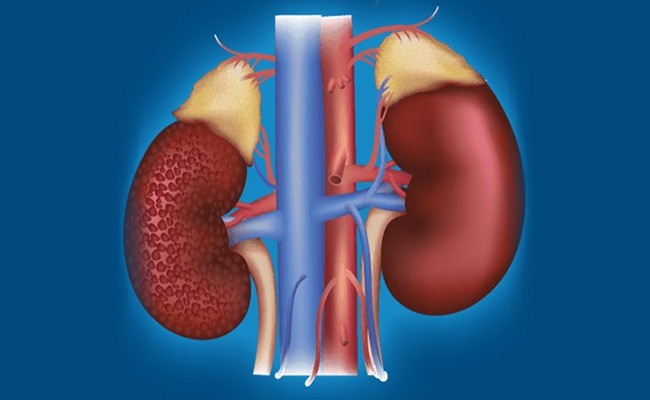Definition of Renal Failure:
Renal failure may be defined as failure to renal excretion leading to retention of nitrogenous waste products of metabolism including creatinine & urea.
Types of Renal Failure:
Kidney failure can be divided into two categories:
1. Acute kidney injury/acute renal failure:
Acute kidney injury (AKI), previously called acute renal failure (ARF), is a rapidly progressive loss of renal function, generally characterized by oliguria (decreased urine production, quantified as less than 400 mL per day in adults, less than 0.5 mL/kg/h in children or less than 1 mLkg/h in infants); and fluid and electrolyte imbalance.
2. Chronic kidney disease:
Chronic kidney disease (CKD) can also develop slowly and, initially, show few symptoms. CKD can be the long term consequence of irreversible acute disease or part of a disease progression.
Definition of Acute Renal Failure (ARF):
A significant deterioration of renal function occurring over hours or days, detected by a rising urea and creatinine, with or without oligura.

Classification or Causes of Renal Failure:
A) Pre-renal Acute Renal Failure:
1. Reduced circulatory blood volume (hypovolumia)
Haemorrhage from any causes:
- GIT bleeding (Haematemesis, melaena),
- Postpartum haemorrhage,
- During surgery,
- Trauma: Fracture of pelvis/ femur.
Loss of plasma as in burn and crushing injuries.
Sodium and water depletion:
- From GIT: Severe vomiting, Diarrhea, Acute intestinal obstruction pancreatitis, Paralytic ileus, Fistulae.
- In urine: Due to diuretics, diabetic ketoacidosis.
- From skin: due to excess sweating.
2. Reduction in cardiac output:
- Myocardial infarction,
- Cardiac temponade,
- Vascular pooling as in anaphylaxis, sepsis.
3. Intravascular haemolysis
4. Rhabdomyolysis
5. Bilateral renal vessel occlusion (thrombosis, embolism)
B. Renal Acute Renal Failure:
Glomerulonephritis: Acute glomerulonephritis
Pyelonephritis:
- Acute pyelonephritis,
- Chronic pyelonephritis.
Vascular:
- Vasculitis:
- Renal arteriolar hypertension,
- Malignant hypertension.
Tubular cells injury:
- Ischemia,
- Toxins: eg, aminoglycosides, sulphonamides.
Intra-luminal obstruction:
- Precipitation of crystal,
- Precipitation of protein – amyeloidosis.
Interstitial nephritis: Diffuse infections, Hypercalcacmia, drug
Others: Polycystic kidneys, renal tuberculosis, PAN
C. Post renal ARF:
Extra renal obstruction:
- Prostatic enlargement,
- Urethral stricture,
- Tumour of prostate, pelvis, urinary bladder,
- Calculi or blood clots,
- Surgical accident.
Intra renal obstruction:
- Crystal of uric acid,
- Crustal of oxalic acid,
- Bladder-rupture/ trauma.
Clinical Features of Acute Renal Failure:
a) Oliguric phase:
Urine volume markedly decrease to 200- 250 ml/day
After some days symptoms of uraemia develop:
- Initially anorexia,
- Nousea,
- Vomiting,
- Apathy,
- Mental,
- Confusion,
- Fits,
- Drowsiness coma and bleeding episodes.
Respiratory rate is often increased due to acidosis, respiratory infection
Danger of oliguria:
- Pulmonary oedema,
- Hyperkalaemia,
- Anaemia,
- Chance of systemic infection is more,
- Uraemia and metabolic acidosis,
- Renal cortical necrosis.
b) Recovery phase:
- After 7- 20 days renal function returns
- In a number of patients a diuretic phase develops
- Urine output is frequently 3 – 5 liters/day
- Usually persists for 3 – 5 days
Danger of diuretic phase:
- Infection
- Electrolyte imbalance, eg. Hypokalaemia.

Maria Khatun Mona is a Founder and Editor of Nursing Exercise Blog. She is a Nursing and Midwifery Expert. Currently she is working as a Registered Nurse at Evercare Hospital, Dhaka, Bangladesh. She has great passion in writing different articles on Nursing and Midwifery. Mail her at “maria.mona023@gmail.com”
